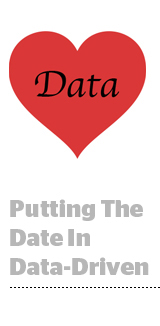
Product and marketing go hand in hand at OkCupid.
There’s a dotted line between user engagement, platform tweaks and the deployment of marketing dollars to reach specific types of users, mainly on social channels like Facebook, Instagram and Snap, said OkCupid CMO Melissa Hobley.
“Our product truth is that we create experiences based on depth, on substance over selfies,” Hobley said. “Our strategy is to communicate that through our marketing and our product.”
For example, it’s clear that millennial women are increasingly frustrated by the disposable nature of online dating and phrases like “DTF?” [Down to … well.] OkCupid launched a campaign last month centered on new interpretations of the vulgar acronym, like “Down to furiously make out” or “Down to farmers market.”
“Knowing what our users are interested in helps us with our targeting,” Hobley said. “We look at where she’s working, where she goes out at night, her interests, the nonprofits she’s involved in and that helps us consider where to spend and how to make smart product decisions.”
OkCupid is one of the old-guard dating apps, predating Tinder, Bumble, Happn or newbies like Coffee Meet Bagel.
Competing with the new kids is a challenge, but having been around since 2003 means OkCupid sits on a trove of historical data it can use to track trends and pull insights on dating habits and how engagement and usage have changed over time.
“We’ve always been obsessed with data,” Hobley said.
 Engagement patterns are telling. The first few months of the year, for instance, are a boom time for dating apps, when users are most likely to download or reactivate an account. But having installed the app, it’s up to OkCupid to keep the ball rolling.
Engagement patterns are telling. The first few months of the year, for instance, are a boom time for dating apps, when users are most likely to download or reactivate an account. But having installed the app, it’s up to OkCupid to keep the ball rolling.
“We’re very interested in what leads to a first connection and what makes it easier for people to connect and talk,” Hobley said. “We look at what people are saying in messages and we look at when people are engaging or not engaging to know when to nudge them or send alerts.”
But the course of true data-driven decision-making doesn’t always run smoothly.
Just before the holidays, OkCupid announced that users will soon be required to use their real name, rather than usernames. Following social media backlash, in which many women and members of the LGBTQ said usernames were a layer of protection, OkCupid said nicknames or initials would suffice.
But on the flip side, Hobley said OkCupid received thousands of requests from daters on the app asking for usernames to go away, and there’s anecdotal evidence that mutual matches are already on the rise now that usernames are no more.
“People don’t like change and we know that not every decision we make will be popular,” Hobley said. “But that’s OK with us, because our decisions are informed by data.”
This post was syndicated from Ad Exchanger.

More Stories
Kiwi media agency D3 appoints Lani Jamieson as General Manager
Sinclair Broadens Use of Artificial Intelligence to Make Local News More Accessible
Making the invisible visible: Women’s Work exhibition to amplify female voices